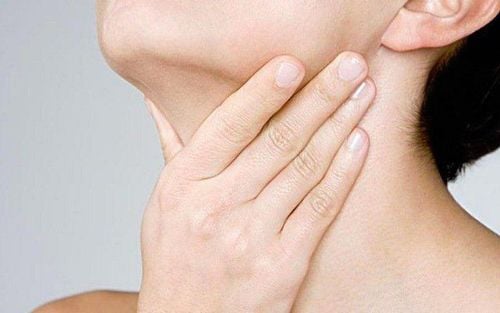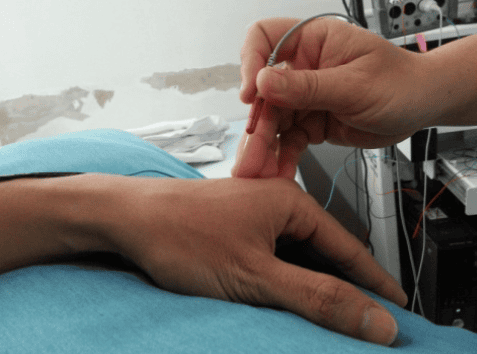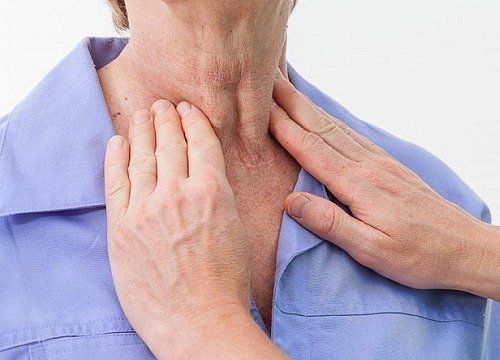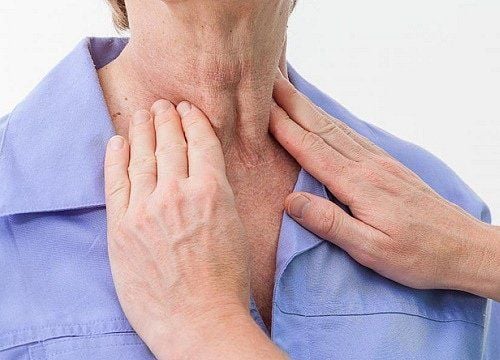This is an automatically translated article.
Swallowing disorders will cause difficulties in eating and drinking, putting patients at risk of malnutrition, dehydration,... Neuromuscular electrical stimulation in the treatment of swallowing disorders will help patients avoid complications evidence and improve quality of life.1. Swallowing disorder
Swallowing is a complex action that includes both reflexes and voluntary movements, with the participation of more than 30 muscles and nerves whose main task is to bring food from the oral cavity to the stomach, and at the same time protect the digestive tract. Breathing prevents food from going up the nose and airways.Swallowing disorder is a condition in which swallowing is difficult during any stage of the swallowing process. Swallowing disorders reduce the patient's quality of life, which can lead to the risk of malnutrition, dehydration, aspiration pneumonia and even death.
Causes of swallowing disorders can be due to structural or functional defects of the oral cavity, pharynx, larynx, esophagus. Besides, it may be due to structural and functional abnormalities:
Structural abnormalities such as: esophageal stricture, spasm, cleft palate, jaw hypoplasia, diverticulum,... often functional: often occurs after neuromuscular, autoimmune and metabolic diseases such as traumatic brain injury, cerebral palsy, cerebrovascular accident, multiple sclerosis, X-wire injury after surgery for blocks neck tumor,...

Rối loạn nuốt là tình trạng nuốt gặp khó khăn trong bất kỳ giai đoạn nào của quá trình nuốt
2. Neuromuscular electrical stimulation
2.1 Overview Neuromuscular electrical stimulation is an increasingly commonly used skill in clinical practice, combined with traditional therapy, to be effective and safe in the treatment of swallowing disorders.The principle of neuromuscular electrical stimulation is to prevent aspiration, strengthen the protective mechanism of the larynx, through stimulating the muscle groups above the nail or between the hyoid bone and the larynx, to improve the ability to mobility of the larynx, enhancing the ability to close the vocal cords through transcutaneous electrical stimulation, stimulating sensory pathways to help restructure the cerebral cortex.
2.2 Indications and contraindications Indications for neuromuscular electrical stimulation for the following cases:
Swallowing disorders due to brain damage such as: traumatic brain injury, brain tumor, encephalitis, cerebrovascular accident, multiple sclerosis, cerebral palsy, Parkinson's,... Swallowing disorder due to damage to the X cord: after neck surgery due to thyroid tumor, esophageal tumor, Guillain-garcin syndrome,... Contraindicated for case:
Pregnant woman Cancer patient Wearer of a pacemaker or metal implant in the treatment area Skin damage or loss of sensation in the treatment area Unstable neck surgery, or with signs of infection, bleeding Increased muscle tone in treated area 2.3 Steps The person performing the neuromuscular electrical stimulation is a rehabilitation physician and speech therapist. Means for implementation include: Vocastim - Master machine with attached accessories such as electrodes, electrode fixing tape. Check the machine's specifications. For the patient, the doctor will explain and dry the skin before placing the electrode.
The steps include:
Expose the treatment area, place the electrodes as indicated. Place the poles: Pole (-) placed under the chin, pole (+) placed on the occipital pole Select the pulse current to treat: Current T/R, Frequency: 2.5kHz The pulse pattern is triangle pulse, square pulse, trapezoidal pulse, plowshare pulse. Pulse time: t = 0.1 – 1000ms. Stop time: R = 1,3.5 s. Intensity: 0 - mA Treatment: gradually increase the intensity until the onset of swallowing Time: 20 minutes, 1-2 times/day. Monitor the patient's response on the spot and the whole body, the operation of the machine. End of treatment: turn off the device, remove electrodes, record treatment sheet 2.4 Accidents and treatment of complications Complications that may occur when performing neuromuscular electrical stimulation include:
Electric shock: need to turn off the device immediately. immediately, emergency treatment of electric shock Local burns: stop treatment and treat burns Hypersensitivity: stop treatment, handle according to protocol.

Biến chứng có thể xảy ra khi thực hiện kích thích điện thần kinh cơ bao gồm: điện giật, bỏng tại chỗ, quá mẫn
Vinmec International General Hospital is a high-quality medical facility in Vietnam with a team of highly qualified medical professionals, well-trained, domestic and foreign, and experienced.
A system of modern and advanced medical equipment, possessing many of the best machines in the world, helping to detect many difficult and dangerous diseases in a short time, supporting the diagnosis and treatment of doctors the most effective. The hospital space is designed according to 5-star hotel standards, giving patients comfort, friendliness and peace of mind.
Please dial HOTLINE for more information or register for an appointment HERE. Download MyVinmec app to make appointments faster and to manage your bookings easily.













